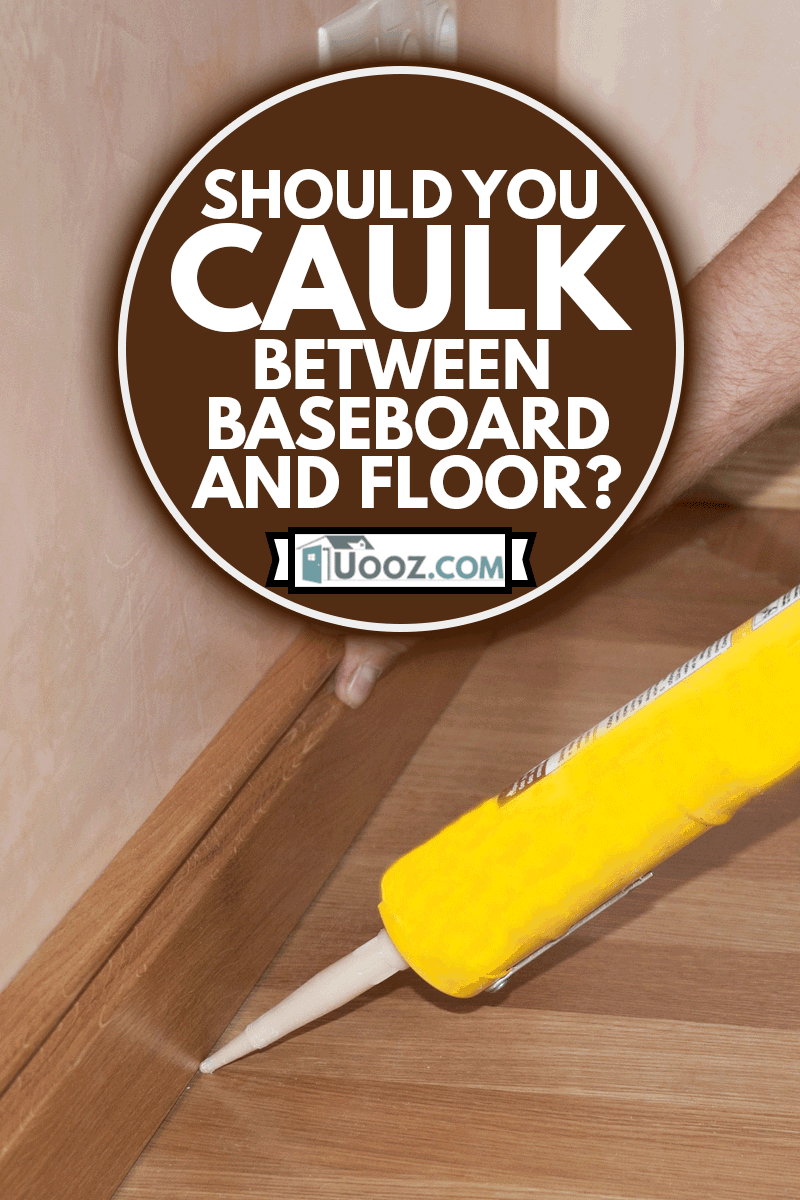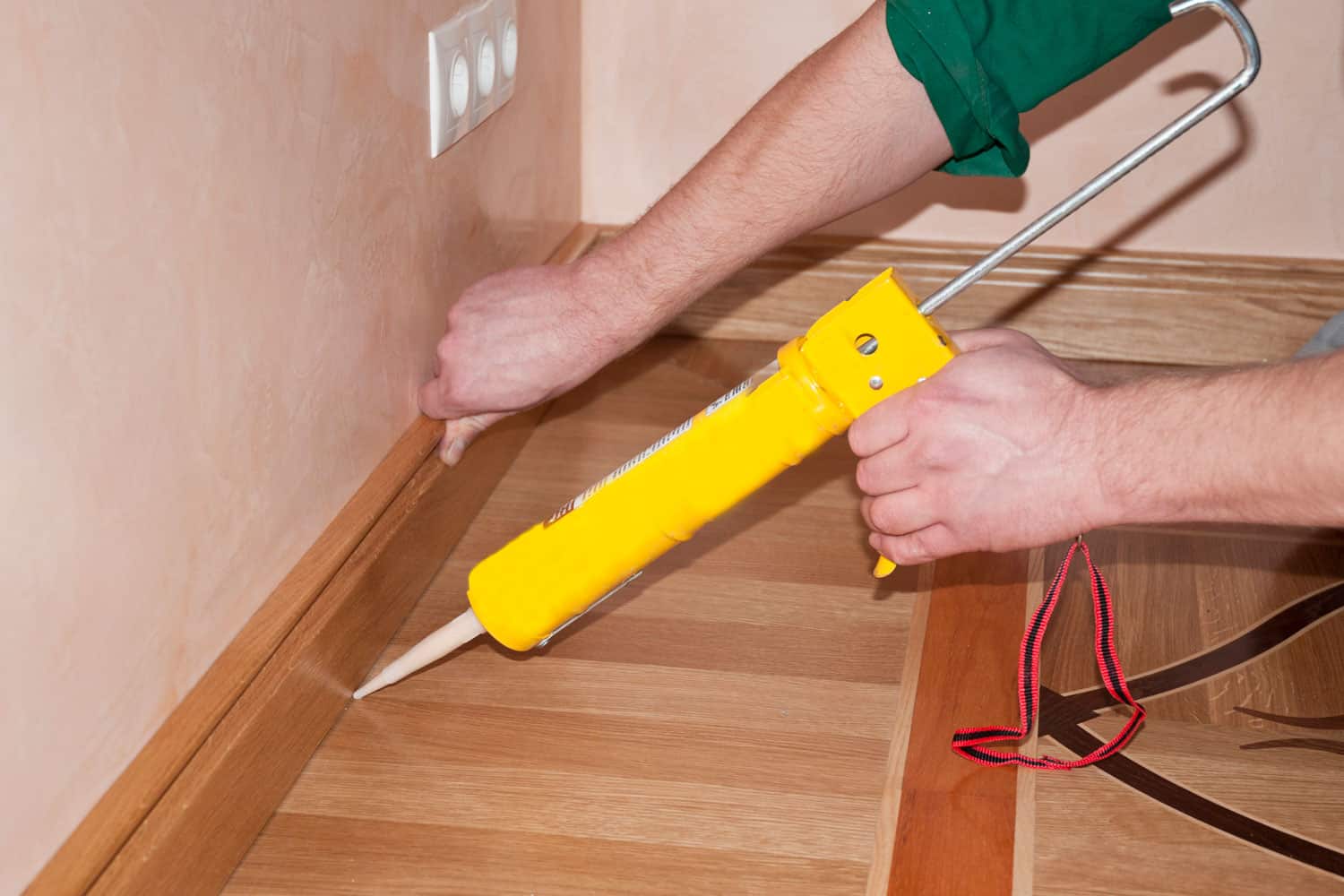If you are remodeling your home, paying special attention to where the floorboards meet the baseboards is very important. The reason is that you don't want there to be a huge gap between the two. But how do you close it? Do you caulk it? Or, should you just leave it as is? We have researched the answer to this question, and in this post, we will answer it for you.
If there is more than an eighth of an inch of space between your floor and the baseboard above it, yes, it is a good idea to caulk the area. However, if the floor has carpeting, it is not a good idea to apply caulk to the gap. It's best to use this method on hard, non-porous surfaces such as stone, laminate, hardwood, or other materials.
Keep reading to find out more on this topic. We'll also cover other important factors and questions when it comes to caulking your baseboards.

Why You Should Caulk Between the Floors and Baseboards
Some contractors may recommend caulking the surface between the floor in the baseboards, while others may not. Also, some homeowners may prefer this method, and others will opt for other ways to close the space. Let's look at the advantages and disadvantages of adding caulk to the baseboards and the floors.
The Advantages
Protects floor and interior walls from water damage
Water from outside precipitation, water heaters located in the attic, or nearby plumbing pipes can all seep behind the walls onto your floors. Water damage can be one of the most expensive repairs that you can face as a homeowner.
Caulking the area between the baseboard and the floors can prevent water from spilling onto the floor and causing the floorboards to warp and bubble. It can also prevent the same thing from happening to the trim itself. If water is left on the trim or floors too long, it will cause it to rot if it's made of hardwood. If the floors have laminate or vinyl covering, they'll likely bubble.
It prevents insects from entering through small cracks
Most homeowners will have to deal with some sort of pest infestation at some point. Whether it is spiders, water bugs, silverfish, ants, or gnats, it can be extremely frustrating to eradicate the infestation once they're inside the home. One of the biggest ways to prevent pests from finding their way from your front yard, backyard, or basement and into your home is to seal up any crevices or cracks from the walls. This includes any space between the trim and the floorboards.
It has better aesthetics
Lastly, you'll find that sealing in the area between the trim and the baseboard simply offers a better aesthetic than leaving the space open with a gaping hole. Adding a caulk layer will help smooth the transition between the trim and the floorboard, and you can even find colored caulk to make the transition flow more seamlessly. Oftentimes, if space if left is left open, it can give the appearance of unprofessional installation.
The Disadvantages
There can also be scenarios where applying caulk is a bad idea. Let's take a look.
There's carpeting on the floor
If the flooring is covered with carpeting, you don't want to add caulking to the area beneath the trim board, as it will stain the carpeting. To prevent gaps, the carpeting should be laid so that there is no space between the trim and the top of the carpet fibers. This requires precise measurement when installing the trim and the flooring.
No gap
If the trim touches the top of the flooring, there is no need to install caulk. In fact, in this case, the flooring may look better without the added caulk at the transition to the trim. In some cases, there may be a small gap that is less than 1/16 of an inch big, but the caulk color may alter the aesthetic, causing many homeowners to avoid it completely.
The home is new
It's no secret that newly built homes require a few years to settle on their new foundation. This means that they will naturally contract and expand over a period of a few years. The wood will also expand a contract with different humidity and temperature changes inside the home. Believe it or not, these small movements can cause the caulk to pull away or crack, causing a noticeable and unsightly gap between the trim and the floor.
And it may need to be reapplied every year or so. If you have a newly remodeled home and are planning to add caulk to the trim, try to find a caulk that has a low shrinkage rate of anywhere between 5% and 10%.
Take a look at this low-shrinkage caulk on Amazon.
The color may change
The potential for the caulk to change colors is another reason why some homeowners prefer not to use this as a method to bridge the gap between the floor and the trim. Some caulk brands and types hold up better than others, while others may turn yellow, develop mold or become stained over time.
However, if you properly prime and paint the caulk, this should not be an issue. Keep in mind that you won't be able to paint silicone caulk without priming it first.
How high should baseboards be off the floor?
The height of the baseboard from the floor will depend on the type of flooring, but generally, it needs to be no more than an inch above the floor. This space leaves room for carpet and padding to go beneath it.
What is the best caulk for baseboards?
There are a few different types of caulk that you can use on your baseboards, though they may vary as far as their individual strengths and shortcomings.
Latex Caulk
Latex caulk is a very dependable type of caulk that dries really quickly. It is also expandable, which is great if you want to fill larger cracks between the trim and floors. Another great thing about latex is that it comes in various colors and can be concealed 100% when you paint over it.
However, it's not the most durable caulk, and you'll find that it will wear down fairly easily if it's exposed to extremely high or low temperatures, varying temperatures, or high humidity.
Check out this caulk on Amazon.
Acrylic Latex Caulk
Acrylic latex caulk is made of both acrylic and latex resins. This caulk is great for a larger or long-term project, and it is very flexible and super durable. If you are looking for a caulk that can withstand a lot of wear and tear, here is one to consider.
Find this acrylic caulk on Amazon.
Siliconized Acrylic Latex Caulk
This particular type of caulk is great for heavy-duty jobs or wines located in extreme weather or temperatures. One of the biggest benefits of latex acrylic caulk is that it is durable, sturdy, and will remain intact even if it is exposed to extreme temperatures or slight movements.
The only downside to this caulk is that it can't be painted without being primed first, and even then, it may not last, depending on the type of primer you use. This caulk is very durable, which means that it's also fairly difficult to clean it up with just soap and water. It's best to use a residue remover such as Goo Gone.
Check out this caulk on amazon.
How do you fill a gap between baseboards and floor?

If you've recently installed trim or a new floor and notice a gap between the trim and the floor, the easiest way to fill the gap is to use caulk. However, if the gap is more than 1/4 of an inch thick, you may want to use another method. One simple method that you can use is installing insulation between the trim and the floor. Not only can this reduce any drafts that may come through the gap, but it can also prevent drafts during the colder months of the year.
You can buy weather strips or other types of insulation for about $10 to $15 online or at your local hardware store. You'll first want to measure the height of the gap and then find insulation that will fit within the space. Next, you'll need to cut the installation to the desired length.
Do you caulk baseboards to vinyl flooring?
Yes, you can apply the caulk in between baseboards and vinyl flooring. You can use silicone or acrylic caulk for vinyl flooring.
Should you caulk between baseboards and tile flooring?
Yes, if the space is approximately 1/8 of an inch up to 1/3 of an inch high, applying caulk can be a good idea. You may want to use silicone caulk as it is the most durable and will bond well to the tile floor.
Wrapping Things Up
We hope that this post has helped you understand the pros and cons of applying caulk between floors and baseboards. Remember, you always want to measure the height of the gap before deciding on the best method to fill it.




